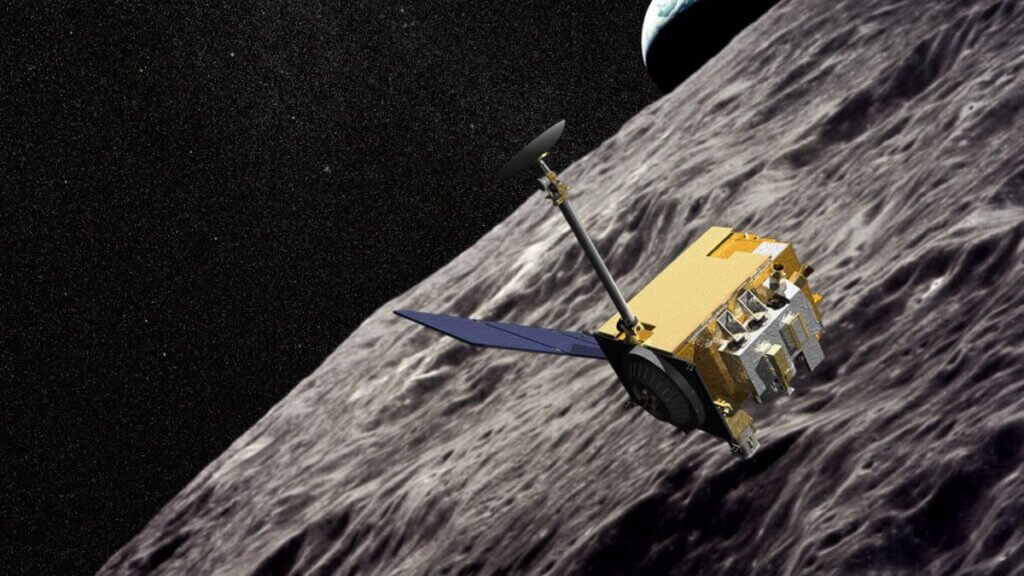Around and around it goes: NASA’s veteran Lunar Reconnaissance Orbiter continues to circle the moon since it first entered lunar orbit in June 2009.
Over the 14 years since its launch, the Lunar Reconnaissance Orbiter (LRO) spacecraft has produced images and data proven that have transformed our understanding of Earth’s celestial neighbor.
While the aging craft remains on assignment — now helping plot out where NASA’s Artemis astronauts will boot their way across select lunar south pole regions — how long will this venerable orbiter last?
Related: Lunar Reconnaissance Orbiter: A guide to NASA’s venerable lunar orbiter
Operational health
Mark Robinson is the principal investigator for LRO’s super-powerful Lunar Reconnaissance Orbiter Camera (LROC for short).
Robinson told Space.com that the big limiting factor for LRO’s operational health, other than a catastrophic failure of one of its moving parts, is the lifetime of the spacecraft’s batteries. “They don’t last forever,” he said, adding that these batteries are must-haves during solar panel power-reducing eclipses as LRO zips around the moon.
As for onboard propellant, the orbiter is not flying on fumes. Fuel-wise, LRO is forecasted to remain in good shape for several years, Robinson said. The craft began its 5th extended mission in October 2022 and ground controllers have gotten very clever in LRO fuel management, he said.
Library of lunar scenery
LRO’s lengthy and ongoing tour of duty around the moon has produced a huge library of photography, revealing the lunar scenery from different angles and lighting conditions.
“There’s been an amazing, unforeseen science return,” Robinson added, such as discovering new impact craters. In addition, coupled with onboard science-sleuthing gear, one LRO big surprise is the overturn of topside lunar regolith, a process that’s occurring far faster than previously thought.
Then there’s LRO-gleaned data that may indicate more recent volcanic activity on the moon than conventional wisdom suggests — and maybe outbursts in the future. “It’s controversial, but that’s fun,” said Robinson.
Recently, LRO imagery has been used to help sort out the best places to plop down robotic assets – even spotting the crash debris of the Japanese company’s Ispace moon lander, Hakuto-R, after it plummeted to its downfall on April 25. Thanks to imagery snapped years earlier by LRO of the crash area, a before/after-the-fact distinction made pinpointing the wreckage possible.
Making a difference
On a more positive note, LRO’s resolving power can aid in charting future lunar rover expeditions and help scope out promising locales that maximize science return, Robinson said. “Right now we’re collecting observations of all potential Artemis [human] landing regions, 13 of them,” he said, “and NASA and the science community are demanding to go to specific places that are way more challenging, landing-wise.”
Furthermore, LRO data is being used to build digital terrain models for several American companies that will deliver equipment to the lunar surface through the Commercial Lunar Payload Services (CLPS) initiative.
“It’s quite gratifying to feel like you’re making a difference scientifically, as well as from an exploration or engineering standpoint,” said Robinson. “I like to imagine an astronaut having a display unit on the arm of their spacesuit, looking at our LRO data so they can see what’s over that next hill.”
On the other hand, at some point, LRO will be no longer.
“I’ll be sad at first, but then maybe relieved. It has been a big responsibility and a lot of work for the LRO team,” Robinson said. “There are lifetimes of data to analyze. I’ll have more time to work with all the information LRO has produced.”
What’s next?
“LRO is currently funded to operate through September 2025, the end of our current extended mission. We anticipate proposing for a 6th extension, which would fund operations from 2025 through 2028,” said Noah Petro, LRO’s deputy project scientist at NASA’s Goddard Space Flight Center, and newly named project scientist for the Artemis 3 mission.
Petro said that all LRO systems show a “graceful degradation,” but nothing is anticipated to impact its ability to continue collecting data.
Meanwhile, NASA is funding a mission concept study to think about what a post-LRO orbital mission might look like.
Called the Lunar Exploration Science Orbiter (LExSO), Petro said it’s one option being considered to fill the gap left behind once LRO’s mission is concluded “and we expect any solution to address agency priorities including science and exploration objectives.”
Next-generation observations
“I feel strongly that it is essential to plan for and implement the next generation of orbital observations of the moon,” said Carle Pieters, a noted lunar researcher at Brown University in Providence, Rhode Island.
Accumulated LRO digital images document how the current lunar surface does change, however slowly. “A host of modern sensors are now also available to provide additional details about the physical and compositional character of materials across the surface and how properties alter with time-of-day,” Pieters told Space.com, data particularly important for the evolving investigations into lunar water ice.
The data provided by those sensors will be hard to replace once LRO reaches the end of its lifetime.
Leadership role
“Due to its intimate relation and proximity to Earth, the moon has been a reliable witness to activities in this small part of the solar system that we inhabit. We will, and must, continue to document and monitor the properties of the moon and learn from them,” Pieters said. “The remarkable reliability and productivity of LRO, which continues to provide data more than a decade beyond its planned lifetime, made us overconfident and lazy.”
Pieters co-chaired a recent report for the Lunar Exploration Analysis Group (LEAG) that underscored the need for continuous lunar orbital capabilities. It deemed it “essential” for the U. S. to preserve a leadership role at the moon during the coming decades of international science and exploration.
“Plans must be made now to ensure continuity,” the report concluded.

